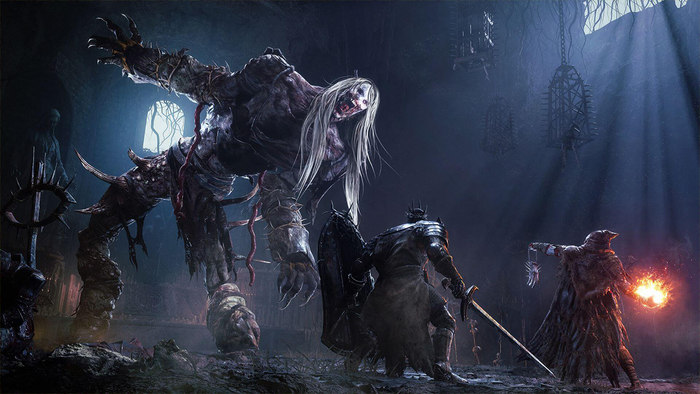Game industry veteran Warren Robinett reflects on some of the curious challenges he faced in developing Adventure, his seminal Atari 2600 action adventure game, today at GDC 2015.

"It was 1978 in Sunnyvale, California. I worked for Atari. I was 26."
Game industry veteran Warren Robinett opened a postmortem of Adventure, his seminal Atari 2600 action adventure game, at GDC 2015 today by reminding attendees of what it was like to be making Atari games in the '70s.
“When I started working there in the fall of ’77 there was no doubt that you could do games [on Atari], but it was hard,” said Robinett. Each game was made by one person — they wrote the code, tested it, debugged it, and decided when it was done.
Atari also didn't give its designers much guidance upfront. “How many people here had their boss tell them on their first day of work: ‘your job is to design games, so go design one.’?” asked Robinett. Nobody raised their hands.
Robinett's first game for Atari was Slot Racers, and while he was wrapping up that project Robinett visited the Stanford AI lab and played the original text adventure, Colossal Cave.
“This was 100 percent text, no graphics at all, but it had the idea of rooms and obstacles, objects you could pick up to get past creatures that moved from room to room,” said Robinett. “All the elements of Adventure, but with no graphics and no sound; almost a different medium, you might say.”
Robinett says he loved it, and he felt he could do a video game version of it for Atari. But first he had to figure out how to represent the elements of an adventure game within a (crude) video game. His superiors at Atari were less than excited about the concept.
“How many of you have been told not to work on something by your boss?” Asked Robinett. Many hands went up. Robinett admitted that he was initially told not to work on his idea for Adventure. "So what I did was, I just ignored my boss, and worked in secret to develop a prototype." Once he figured out how to demonstrate the idea was feasible, Robinett was able to work on Adventure above-board -- though the game was nearly rebranded as a Superman movie tie-in under pressure from Atari's then-parent company Warner Corp.
"I've become attached to my duck dragons"
To represent rooms, Robinett tried to make map-like overhead views of rooms — one to a screen. For movable objects, he crafted crude sprites; for the avatar, a small square he jokingly called the “ball man.”
“I experimented with an inventory screen, but if a dragon came and ate you while you were looking at your inventory, well…that’s not quite right,” said Robinett. He considered working out how to pause the game, but “I liked the idea of staying in real-time, so I made it so you can only carry one object at a time.”
To make autonomous creatures, Robinett associated subroutines, executed each frame, to graphical objects. They would guide their motions through basic programming that replicated creature “desires” and “fears”.
"When I was two-thirds of the way done with Adventure, it just wasn’t that great,” said Robinett. All the dragon did was chase the avatar, for eternity, and he wanted to make it more interesting. So he looked to behaviorism — the idea that you can define animal behavior by a series of stimulus/response rules — for inspiration.
So for example, the yellow dragon monster would have a list of stimuli and associated responses — fee from the sword item, for example, or chase the man or the chalice.
The latter behavior would cause the appearance of a “guarding” instinct, and the interplay of these simple rules created a rude illusion of AI. A dragon might chase the character until it enters a room with the yellow key, then flee, making it appear to show fear -- until the chalice was stolen by the bat and the dragon started chasing you again.
“Kids would scream when the dragon came into the room,’ said Robinett. “Even though older people said they looked like ducks. I’ve become attached to my duck dragons.”
That Adventure bat, infamous for annoying players by randomly moving objects around the game, was a last-minute addition for Robinett.
“Anybody who’s played Adventure remembers the bat,” said Robinett, noting that he added the bat into Adventure late in development to keep the game interesting. After players had figured out how to beat a level it lost all dynamism — it became what Robinett’s friend called a “pure puzzle,” and thus less interesting to play.
“The way that you turn a pure puzzle into something more interesting is to add randomness to it,” said Robinett. By having the bat move objects around (and even steal objects from the player), Robinett believes he made the game more interesting -- and gave it more lasting appeal.
The hidden signature
And of course, he also made another last-minute addition that became notorious: his signature, spelled out in two lines of text 96 pixels tall by 8 pixels wide.
Atari had a policy of not giving developers credit for their work, but Robinett wanted to put his mark on Adventure. So he built a super-secret chamber that held the message “Created by Warren Robinett.” To this day, it’s considered the first “easter egg” ever designed into a game.
“But I didn’t call it an easter egg — I called it my signature,” said Robinett. “Like a painter would put down in the corner of his painting.”
Read more about:
event gdcAbout the Author(s)
You May Also Like







